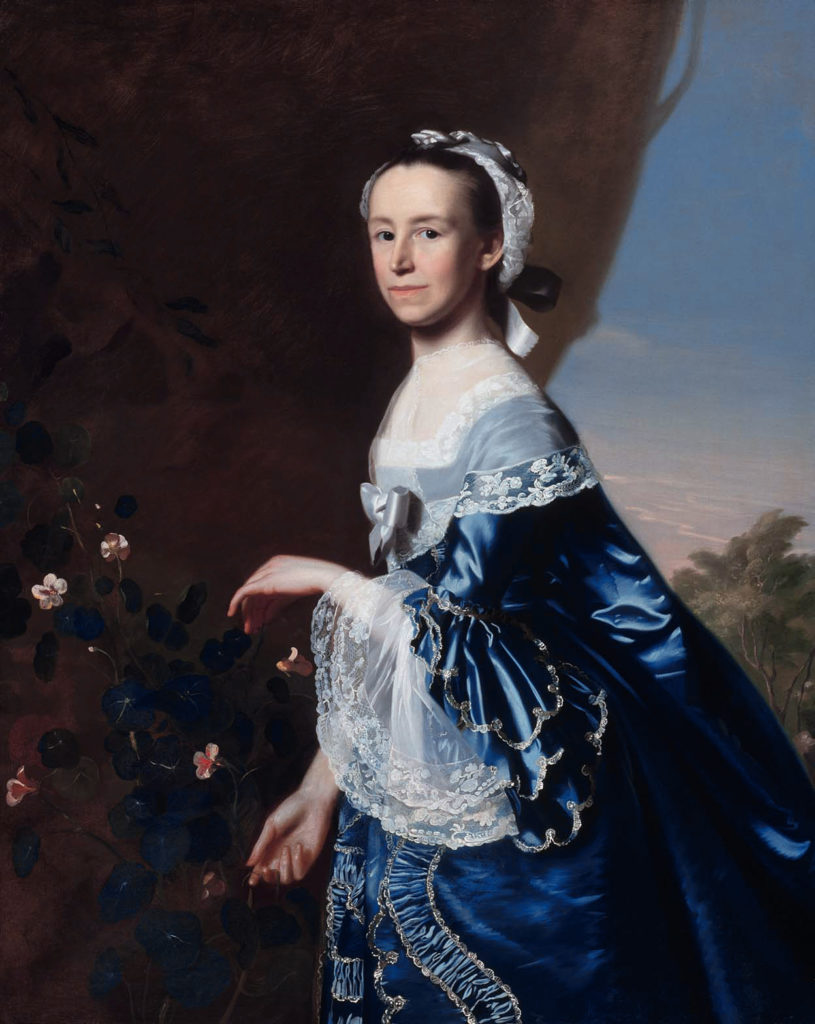Serena and Mercy
Recently, a friend told me that the umpires at Wimbledon call Serena Williams “Mrs. Williams,” despite the fact that she has not taken her husband’s name or otherwise asked that her marriage be professionally recognized. The hiccup is that Wimbledon only recognizes “Miss.” and “Mrs.” (not Ms.) as acceptable prefixes to a woman’s name. (It does not use any honorific for men, but notes the husbands, wedding dates, and wedding locations of women in the glossary of the Wimbledon Compendium.) How Ms. Williams would be recorded on the board of champions should she win this year’s tournament is still up in the air. The conventions of the All England Club are indicative of the sort of people who regularly frequent it, and a woman’s individual choice about how she would like to be named matters not.
That a snooty tennis club in Wimbledon would conflate a woman with her husband in 2018 is perhaps not so shocking. But imagine my face when I walked into the permanent exhibition of the Museum of the American Revolution today and saw that Mercy Otis Warren, general all-around mighty thinker and first historian of the Revolution, was referred to as “Mrs. James Warren (Mercy Otis).”
Much as Ms. Williams’ honorific at Wimbledon tells us a great deal about the stuffy conventions of the All England club, Mercy Otis Warren’s label was, in microcosm, an indicator of how the whole exhibition was going to go.
There were things I liked about the exhibition, and almost all were to do with design. The exhibition has movement – it twists and turns in a way that matches the fortunes of the Revolutionary War. It makes excellent use of color, lighting, and portraits, broadsides, and art from the era. The text throughout the exhibition is well written and accessible – no jargon that I could see. There are lots of things placed at the sight line of children or individuals using wheelchairs (save for many of the interactive screens, which were placed too high for children or individuals using wheelchairs to comfortably reach them.) There were captions on the short films throughout the exhibition, and an audio tour (although it cost $5), and even signs helping people to navigate past an immersive battle experience (which I could easily imagine would be disturbing to many). There was not enough seating, however – the exhibition is quite long, and the only seating was at the short films, rather than handily placed where patrons with limitations of mobility or energy might need it.
But the content. Oh, the content. First, the museum should be called the Museum of the Revolutionary War, as that is the story it chooses to tell. And it would be even more accurate to call it the Museum of (Mostly) Free Men in the Revolutionary War, as free women, the enslaved, and Native people are very much treated as occasional ‘add ons’ rather than people who have important stories to tell.
We learn, for example, about Abigail Adams’ letter to John in which she famously urged him to “Remember the Ladies,” and Frederike Charlotte Luise Riedesel’s journal of the Saratoga campaign, but we learn very little about coverture, or the essential services of female camp followers during the war. Since coverture was the glue that held social relations together during and after the war, and since camp followers were, in essence, the quartermaster’s corps of Washington’s army, these are significant omissions. We learn about a certain number of enslaved men and women, but the exhibition never really grapples with how essential their labor was in freeing up white men to lead the Revolution, or to the very creation of the country (see the ‘Paradox of Liberty’ portion of the permanent history exhibition at the National African American Museum of History and Culture for comparison). We can enter a small portion of the exhibition that focuses on the Oneida’s choices during the war, but we never see (that I can recall) colonists called settlers, or their actions identified as taking place on stolen land.
I was struck throughout the exhibition by the timeline used. It prioritized those events which would be familiar to anyone educated in an American public school since . . . forever. The inclusion of the voices of free women, Native people, and the enslaved did not shift the timeline; this was a timeline defined by the actions of white men, and the most that other voices could provide was a glimpse at the other worlds in which so many people were living – a little color; a little intrigue; a little backstory, but no wholesale revolution in the telling of the tale.
Like Mercy Otis Warren, the majority of the people in the exhibition were defined by their relationship to a man deemed more significant. We are, much like the All England Club, still party to conventions that do not serve us all equally, and that fundamentally posit that free white men had a more urgent, necessary, and weighty connection to the business of the place that anyone else.
On all counts such conventions are ridiculous unless our aim is to preserve structures of power that privilege some people over another. The All England club – and the Museum of the American Revolution – can do so much better if they choose.

